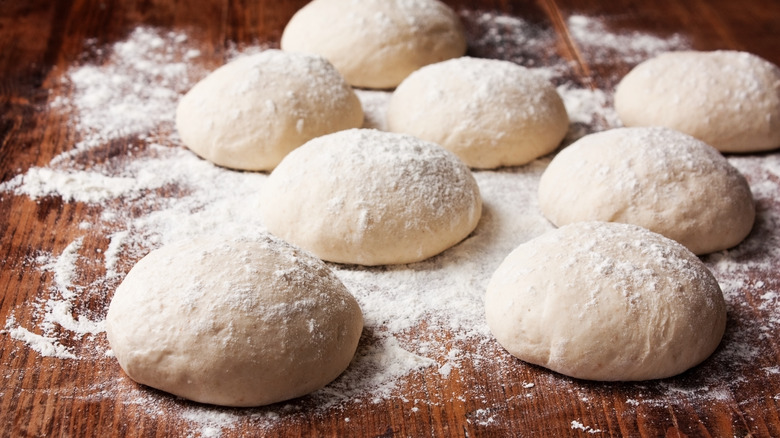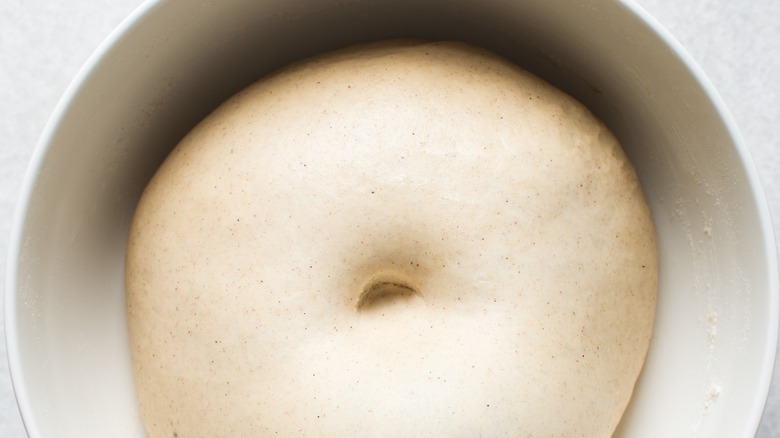Did Your Pizza Dough Rise Long Enough? Use A Glass Of Water To Check
They say the secret to a perfect homemade pizza is a perfect crust and we agree. This boils down to how well you make the dough, starting with mixing the right ingredients in the right quantities following the right order, kneading the dough sufficiently (whether by hand or using a stand mixer), proofing it properly, and stretching it correctly. Proofing is arguably the most finicky step. Perhaps this is the reason most home cooks avoid making their own dough and instead resort to the store-bought version. To ensure your dough has proofed properly, you need to let it rise long enough. And there's a simple test to confirm that: the float test.
The float test involves filling a glass with water partway and dropping a ball of the pizza dough inside. If it sinks to the bottom, your dough isn't sufficiently proofed. Give it more time and then repeat the test. Once you get a floating ball of dough, it's ready. The idea behind this simple test is that as yeast works on the dough, it releases carbon dioxide gas. This gets trapped within the dough in bubbles causing the dough to expand. These air pockets lead to a lighter and airy dough, hence why it can float on water.
More ways to check if pizza dough is properly proofed
Apart from the float test, there are other ways you can assess whether your pizza dough is done proofing or not. One of these is the poke test. It follows the same process as the poke test when proofing homemade bread dough. Press on the dough with a finger to create a small depression. On lifting your finger, if the dough bounces back up such that you can't see any indentation, that's a sign your yeast is still producing lots of gas, so the dough isn't ready. However, if after lifting your finger from pressing the dough comes back up slowly but still leaves a bit of an imprint, then it's ready to stretch and then bake.
Lastly, the doubling test is one of the easiest ways to confirm if your dough has risen enough. However, if you just eyeball it, your judgment might not be very accurate, and you risk either declaring the dough ready too early or too late. To avoid this mistake, place the dough in a measuring jar at the start of proofing. Take note of the level of the dough as per the markings on the jar. Once it doubles in volume and reaches a point that's double the original level, your dough is ready. Remove it from the jar, stretch it into a nice circular shape, add your favorite pizza toppings, and bake.

